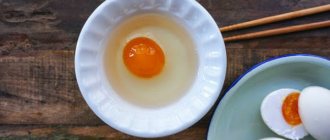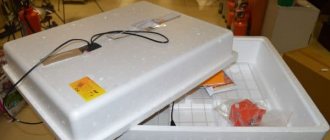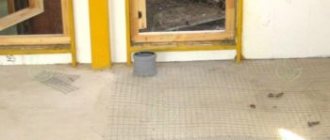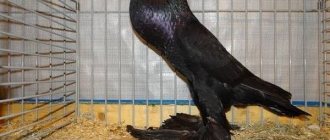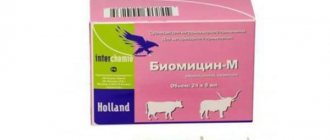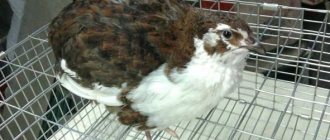Features of the incubator
The Cinderella incubator, which we recommend for use in households, is inexpensive and pays for itself very quickly. The price depends on the specific model chosen, which differ not only in capacity, but also in the way the eggs are turned. Naturally, the incubator for 98 eggs and with a mechanical turning function is the most expensive, and the cheapest is for 28 eggs with a manual turning.
If we briefly describe the characteristics of this device, the following should be noted:
- If high-quality eggs are selected (the selection takes place on an ovoscope), the hatchability can be 98 percent, this is confirmed by numerous reviews of those who purchased them.
- Depending on the type of incubator, heating containers can have an area of up to 1.5 thousand square centimeters.
- A very economical gear motor can independently turn eggs ten times a day.
- The set includes additional grids and a thermometer.
- Manufacturer's warranty for the incubator is three years.
“Cinderella” is equipped with water-type heaters, which are located on the lid. It is this system, according to numerous reviews, that guarantees uniform heating of eggs. In the automatic turning model, the eggs are turned 180 degrees every 2.5 hours.
Distinctive characteristics
In this device, the heating elements occupy the maximum area. This is done to ensure better heating of the eggs without a fan. The body is made of durable polystyrene foam, which has the best thermodynamic characteristics.
Warming up proceeds as follows. The water is heated using heating elements and heats the metal plate, and from it the heat flows into the incubation chamber. It is this technology that distinguishes the “Cinderella” model from similar incubators from other manufacturers. The heat is distributed more evenly and there are no temperature fluctuations.
Water makes it possible to better maintain the set temperature of the heating elements throughout the entire incubation time. This makes incubation extremely close to natural conditions. It is this feature that, in the case of laying high-quality eggs, guarantees more than 95 percent hatchability, which is confirmed by many reviews.
This technology has another undeniable advantage in comparison with other incubators. If the electricity is turned off for a long time, the incubator can operate using hot water. You just need to constantly drain the cooled water and add hot water.
The incubator is equipped with a temperature sensor with a regulator located on the lid. If the temperature deviates from the set one, heating will be automatically turned on. To increase the temperature you need to rotate the knob clockwise, and to decrease it counterclockwise. All models are equipped with a special electronic thermometer, powered by a battery.
All about Cinderella incubators
Little by little, the days when eggs in households were hatched by brood hens are becoming a thing of the past. Nowadays, even in small households, this work is increasingly trusted to incubators. Today, the market offers incubators from different manufacturers and different capacities. But the most popular is the Cinderella incubator for 70 eggs, automatic turning 12 220v - video and instructions for which we offer in this article. This household appliance is one of the best and has deservedly received many positive reviews.
Modifications
Choosing an incubator for exactly how many eggs to lay is a purely personal matter and depends on the size of your farm. Perhaps one large one for 98 chicken eggs will suit you, or you may be better off purchasing several smaller ones if you plan to incubate eggs of different types of birds.
Before buying a household incubator, you need to decide in advance not only its size, but also other characteristics:
- In terms of capacity, the manufacturer supplies the market with incubators for 28, 45, 70 and 98 chicken eggs.
- The next important parameter is the method of turning the eggs. Here, at your discretion, you can purchase with a mechanical, automatic and manual turning method.
- Nutrition may also be different. Mostly on sale are models that run only on electricity. But it would be useful to connect a 12 Volt battery. In the event of a power outage, the incubator will operate on battery power for a certain time, perhaps this will be enough until the supply is restored.
If electricity is not supplied for a long time, and the battery powering the incubator has run out of power, you can proceed as follows. Fill ordinary plastic bottles with hot water and cover the body of the device with them. This method will allow you to maintain the desired temperature for a long time.
Advantages and disadvantages
The main advantages of the Cinderella incubator:
- pros
- High efficiency indicators - the device ensures the survival rate of chicks by 95%, which no known analogue can boast of.
- Mobility - the heaviest device weighs 5 kg, which allows it to be transported to any point without much energy consumption.
- Possibility of maintaining the microclimate inside the device even during a power outage for up to 10 hours.
- Automation of biomaterial turning over.
- Possibility of additionally equipping incubators with grids for goose, duck and quail eggs.
- Full control over the process.
- Automated transition to power reserve.
- Economical energy consumption.
The device can be used not only by experienced poultry farmers, but also by beginning farmers.
- Minuses
- The need to set the temperature yourself due to the fact that the process is not fully automated.
- The foam casing is not durable and does not allow air to pass through well. Without proper disinfection measures, mold develops in the pores.
Important! The design of the incubator involves automatic and manual turning. Be sure to check the position of the biomaterial and the thermostat. They may shift during movement.
Instructions for use
Using a household incubator is not that difficult. It is enough to properly prepare for work, select and load eggs and monitor the maintenance of temperature and humidity parameters at the specified levels.
Preparing for work
- Before you start using the incubator, be sure to read the instructions and understand the basic safety rules.
- Place the incubator on a flat horizontal surface and it is advisable for it to remain there for the entire incubation period.
- It is advisable to disinfect all internal surfaces and removable elements with a manganese solution immediately after purchase and before storing.
- We install plastic baths on the bottom, their number depends on the humidity in the room. If it’s very dry, then set it to 5-6; if it’s damp, then you can get by with two.
- We pour water into them. During incubation, you need to ensure that there is always water in these baths; if it evaporates, you need to top it up.
- Place a plastic grill on top.
- If your electricity is often cut off, then do not skimp, but immediately purchase a 12V battery along with the incubator. When connecting, observe polarity. If there is a power failure in the network, the system will automatically switch to backup mode. The charge of the car battery is enough for 24-28 hours of operation of the incubator.
Laying eggs
Of course, the most important stage when incubating eggs is laying them. Before laying, be sure to check all the eggs on an ovoscope; it is better to choose the best 28 out of fifty than to waste time on incubation.
- Before laying, you need to mark all the eggs, no matter whether there are 28 or 98, preferably different on two opposite sides. This is done to make it easier to control the turning process.
- Important! Make sure that all eggs are placed with the same mark facing up. If the incubator is equipped with a turning mechanism, then place the eggs in cells.
- We install the temperature sensor vertically and put on the lid.
- We pour one liter of water into the chambers at a temperature of 85-90 C. If the incubator is not fully loaded, then the temperature of the water poured should be within 70 C.
- We insert the thermometer into the hole between the window and the temperature regulator. Make sure the thermometer probe is just above the eggs. This position cannot be changed throughout the entire incubation period.
- We connect the rotary device to the network.
- According to the instructions, turn on the device after half an hour.
- The temperature should be constantly monitored using a thermometer and be within 38.3-38.7 degrees. If the temperature rises above 39 degrees, the consequences may be irreparable.
- Always make sure that there is water in the trays and containers. Add more as it evaporates.
- During the incubation period, do not open the lid for more than a few minutes. However, periodic ventilation with a short-term decrease in temperature is necessary.
Chicks hatch in 21 days. A couple of days before the end of incubation, you need to turn off the rotary device and also remove the grill. When the chicks are born, you need to wait until they dry out. Then, after about 5-7 minutes, transplant to a warm place where the temperature will be maintained at 37 degrees. After this, you can wash and disinfect all equipment with a solution of potassium permanganate.
Description of the incubator
The device is designed to work with a 220V household network to automatically maintain the set temperature. The body is made of a material with acceptable thermal insulation characteristics, polystyrene foam. The design of the heater ensures uniform heat distribution throughout the entire internal space of the incubator. The lid of the device has a built-in temperature regulator that prevents the testicles from cooling.
An electronic thermometer (included in the kit) is used to monitor the mode. To improve efficiency, a special device automatically turns the embryos. Cinderella has a high efficiency, about 90%, this is a serious indicator for this class of incubators .
Reviews
To accurately understand all the pros and cons of this model, it is worth considering customer reviews.
| Positive | Negative |
| Light weight | Not very reliable |
| Can be placed in any convenient place | The need for grating control |
| Ease of use | The need to constantly look at the thermometer |
| Battery operation allowed | Mold formation on the walls |
| Low cost | Inaccurate operation of electronics |
| Excellent temperature distribution | |
| Ability to maintain the required level of humidity | |
| Automatic rotation capability | |
| Possibility of heating with hot water | |
| Excellent output up to 98 percent |
How to properly operate an incubator
All work on maintaining an artificial hen can be divided into several stages:
- Preparation.
- Bookmark.
- Direct incubation. Here the machine will perform the function for which it was created.
Preparation includes a number of actions, non-compliance with which leads to disruption of the incubation process and breakdown of an expensive machine.
First of all, the owner needs to read the instructions for use, which are equipped with each Cinderella model. It is important to follow all safety precautions when working with the device.
The incubator must be installed on a flat, horizontal surface. What should be taken into account here is that it is strictly forbidden to rearrange the machine during operation, because any movement negatively affects the incubation process.
Before assembly, it is necessary to disinfect all parts; potassium permanganate is used to treat the grates (where the eggs will be located).
You need to install water containers inside the machine. If there is a high level of humidity in the room, then the tanks must be installed in a minimum quantity. A total of 6 or 1 containers can be supplied.
The water is heated to 40°C and only after that is poured into the trays. While the car is heating, it is necessary to monitor the fluid level, which should be at a constant level.
The egg rack is installed.
The preparatory stage will not be completed unless the stability of the temperature inside the heating chamber is checked. Here you can use the electric thermometer that comes with the incubator. It is necessary to set the desired mode (+37-39°C).
Once the control mark is reached, a signal will sound. To maintain the temperature at a constant level, it is necessary to connect an automatic thermostat. It will turn on on its own every few hours. If after 4 hours of operation of the machine no failures were recorded, then the incubator is ready for use.
Helpful advice. Experienced poultry farmers advise placing an additional thermometer inside so that you can compare the results. It is also worthwhile to purchase a hygrometer to monitor humidity levels.
After assembling the unit and setting the required parameters, you can add incubation material.
Each egg must be labeled. This item applies to Cinderella incubator models that do not have automatic egg rotation. All products are laid out on racks so that the mark is on top.
The temperature is set to the values at which the test was carried out.
The next stage involves pouring hot water (about 90°C) into special containers and setting up the thermometer and temperature sensor.
Then you need to connect the incubator to the mains, but the automatic egg turning can be connected after 30 minutes. This function is turned off only a few days before the expected date of birth of the chicks.
How to regulate humidity in an incubator
Based on the data received from the hygrometer, the poultry farmer makes the final decision - to continue monitoring these indicators or to begin taking specific actions to achieve the required norm values.
How to do this and what is needed for this depends on whether the available numbers are increased or decreased, so we suggest considering the following possible options.
How to increase
You can increase the humidity inside the incubator chamber using available means in two ways: using a bath and heating element or by injection. In the first case, you need to install a heating element (200 Watt) into a metal container and, after filling the container with water, place it in the incubator, under the tray with eggs. As water evaporates, it will increase humidity, and as soon as the liquid runs out, it is added.
Increasing performance using a pump involves water entering the interior of the incubator from above, and all that is required to make such a device is a spray nozzle from household cleaning products and a pump with a bath.
From the container, water will be pumped into the sprayer, which, in turn, will spread small drops throughout the incubator.
Important! Such a sprayer can be installed no closer than 20 cm from the surface of the tray with eggs, which will ensure uniform distribution of liquid over its surface.
Sometimes poultry farmers use purchased equipment to increase humidity, the most popular of which is an ultrasonic humidifier, for example, AC100 at 240V and Fog Maker 16 mm Fogger.
How to downgrade
To lower the humidity level in the incubator, you need to perform almost all the same steps as in the previous case, only exactly the opposite. Since most models of such machines have a bath of water in the lower compartment, to lower the values you only need to lower the water level in such a tank, having first disconnected the incubator from the power supply.
If the humidity level during incubation of chicken eggs reaches 80% and does not decrease in any way with the help of the regulator, then you will have to act radically, temporarily removing the tray of water from the device. If, due to the design features of the incubator, this is impossible to do, you will have to pump out the water.
As a last resort, moisture-absorbing materials in the form of a washcloth or cloth are placed inside the machine to help get rid of excess moisture. Their time in the incubator is 30–40 minutes.
Of the ready-made devices for lowering the specified values, poultry farmers recommend the VRD-1 and RV-16/P regulators, which will also need to be placed inside the device.
Household incubator Cinderella: description
The body of the device is made of polystyrene foam, which has decent thermal insulation. Thanks to it, optimal temperature conditions are ensured inside the incubator. The inside of the incubator is heated using metal heating elements specially designed for this purpose. There is a sensor (thermostat) on the lid of the device, with the help of which the temperature inside is properly regulated. As soon as it drops below the permissible value during the incubation process, heating is immediately turned on.
Important! Each model has an electronic thermometer that runs on ordinary AA batteries.
Inside the device there is a device for turning (auto-rotating) eggs, which turns them 10 times a day by 180⁰, but there is also a manual mode.
The incubator operates from a 220 V network, but if the electricity suddenly goes out, the equipment will automatically switch to the built-in 12 V battery. In addition, the incubator has a special mode for this case, which allows you to use hot water instead of electricity to maintain the desired temperature. The device can operate in this mode for 10 hours. The water prepared for this purpose must be heated and after about 3.5 hours poured into a container specially designed for this purpose in the device.
Important! The Cinderella egg incubator has high levels of efficiency - 90% of the chicks hatch from the eggs. Not all manufacturers can boast of such good results.
Incubator and its features
Since the topic of the article involves the study of temperature conditions when breeding birds by artificial heating, you should first of all find out what an incubator (incubator) is and consistently understand the reasons for the strict attitude towards the rules for servicing specific equipment provided for by the technology of unnatural “incubation”.
The process of embryo development depends on the stability of various indicators, which means that the correct operation of thermostats is also of no small importance. It is quite possible to equip the incubation equipment with an electrical thermostat or to make an option using a thermostat yourself.
Heating equipment for use in chicken coops (in particular, for breeding poultry) is divided into household and industrial. Modern “machines” involved in livestock farming have all the current set of functions necessary for correct handling of those for whom they are intended.
The most affordable and versatile incubators are Cinderella and Ideal Nesedka.
Automatic equipment of this type has on board high-precision sensors for measuring all coefficients, as well as automatic control systems for trays with contents.
It is especially worth clarifying that for a suitable result and full functioning of the incubator, regardless of its performance and origin, only fresh eggs are used.
Since compliance with the rules defined by the nominal regulations guarantees the production of healthy young animals, it would not be worth ignoring this discipline.
Rules for using the incubator
Before you start laying eggs, you need to prepare the thermostat for operation. Each Cinderella incubator comes with instructions. It is necessary to check the scope of delivery using the list.
The material for obtaining the brood is placed in a heated incubator, assembled according to the instructions.
The rotating device is switched on when the operating temperature is reached in the chamber. Set eggs should be marked to ensure even turning. Observation is carried out through the observation window. There is a ventilation hole in the case. You can open the lid for manipulation for no more than 5 minutes.
At the end of incubation, the temperature and humidity conditions change. The metal mesh is removed from above and the turning device is turned off. The chickens peck in silence; you can hear squeaking sounds. It can take about a day from pecking to complete emergence. After this, the chicks are allowed to dry and transferred to the brooder.
The instructions for the Cinderella incubator do not provide information about changes in temperature, humidity, or the need for ventilation over the weeks of embryo development. For different birds, the mode and timing of hatching are different. Compliance with incubation requirements determines the percentage of yield.
Incubator structure
The Cinderella device operates from a regular electrical network of 220v. The voltage requirements are discussed in detail in the instructions included with each incubator. The Cinderella device is simple: water tanks, a gearbox, an electric motor, turntable pushers and fasteners, an electronic thermometer.
Water heaters are installed at the top of the working chamber. Its volume should be enough for 8 hours, and heat is transferred from working heating elements through metal plates. This ensures uniform heating of the incubation space.
Depending on the model, the device may be equipped with an analog or digital temperature controller. For convenience, the temperature sensor is located on the lid of the device. The cover of the Cinderella incubator is removable. This is necessary to make it easier to remove the grate, lay eggs, clean and wash the internal surfaces.
The kit includes instructions with a technical description, warranty and detailed instructions for use.
Frequency of correction
Speaking in this context, we note three incubation periods with boundaries for their duration:
- Initial – from 1 to 11 days. The air inside the container is kept at +39 C°;
- Intermediate – from the 12th day before plucking, the beginning of which is noted on the 18-19th day. Stage of decrease to +38.5 C°;
- The final one is from the 19th day until the final pipping, usually 20-21 days. The temperature is reduced to +38/+37 C°.
These are statistical data of the egg incubation regime, which do not reflect the entire complex of measures and regulatory tasks, but only analyze the algorithm for varying the thermal schedule.
But the incubation period is a special time when there is a risk of negative phenomena that can destroy the embryos. One of these events, trivial at first glance, is sudden (emergency, etc.) interruptions in power supply.
If the decrease in heat levels gets out of control, causing a failure, then the likelihood of death of the young stock will increase significantly. The temperature at which the chicks hatch in the incubator is the most important thing in this amazing process!
Still, this can happen, but the breeder can avoid a tragedy for the embryos.
Preventive measures indicate the use of heating pads with boiling water - placed on the incubator, they will help stabilize the temperature regime and keep it at the desired level for some time until the emergency condition is eliminated.
If the failure (see above) occurred before the 12th day from the moment of laying, then according to the technology it will be necessary to close the ventilation holes in order to help conserve thermal energy. If the situation unfolds later, then there is no need for action with ventilation, since the generated heat in this case will be sufficient for 2-3 hours.
The picture can also develop in the opposite direction, the eggs will heat up higher than expected. It is necessary to quickly begin to eliminate this incident - immediately cool the equipment to an acceptable +33 C°. It is noticed that after this, the restoration of the correct conditions will occur in 35-40 minutes.
